The Dawn of Regency Square Mall
The establishment of Regency Square Mall in 1967 emerged as a pivotal moment, reshaping the retail scene of Jacksonville, Florida.
Developed by Regency Centers, this $12 million project transformed an expanse of dunes into a bustling commercial hub.
The mall’s opening date, March 2, 1967, heralded the arrival of a new era in shopping and social interaction for the residents of Jacksonville.
Regency Square Mall was initially anchored by three major department stores, each a beacon of style and commerce. JCPenney, May-Cohens, and Furchgotts provided diverse products and services, drawing shoppers from all over the region.
These anchor stores were complemented by a Woolworth dime store, serving as a junior anchor and offering an assortment of goods at affordable prices. The presence of these retail giants established the mall as a premier shopping destination.
Beyond shopping, the mall was a place for dining and entertainment. A cafeteria-style Piccadilly restaurant offered a variety of culinary delights, becoming a favorite spot for families and friends to gather.
The Regency Cinema, a single-screen theater that expanded to two screens, provided a venue for the latest films, contributing to the mall’s reputation as a center for leisure and entertainment.
Additionally, Annie Tiques bar and restaurant on the southwest corner of the property became a popular local haunt, further enhancing the mall’s appeal as one of the top things to do in Jacksonville, Florida.
From its inception, Regency Square Mall was more than just a collection of stores; it was a vibrant community space where shopping, dining, and entertainment converged.
The mall’s early years set the stage for its evolution into a landmark of commerce and culture in Jacksonville, reflecting the city’s growth and the changing dynamics of the retail industry.
As the mall adapts and transforms, its foundational years remain a testament to its enduring significance in the region’s commercial history.
The Golden Era of the 1970s and 1980s
The 1970s and 1980s marked a period of remarkable prosperity for Regency Square Mall, solidifying its status as a cornerstone of commerce and community in Jacksonville.
In the 1970s, the mall’s success was highlighted by an Urban Land Institute study published by the Florida Times-Union in 1979, recognizing it as one of the nation’s most profitable retail centers.
With an impressive yearly average sales figure of $156 per square foot, significantly surpassing the national average of $88 per square foot, the mall emerged as a paragon of retail success.
This era was defined by financial triumph and a strong sense of community involvement and contribution. The mall became a focal point for social gatherings and cultural events, hosting everything from art shows to science fairs and horticultural exhibits.
The operators of Regency Square Mall demonstrated their commitment to the community by donating thousands of dollars in coins collected from their decorative fountains to local charities, fostering a spirit of generosity and civic engagement.
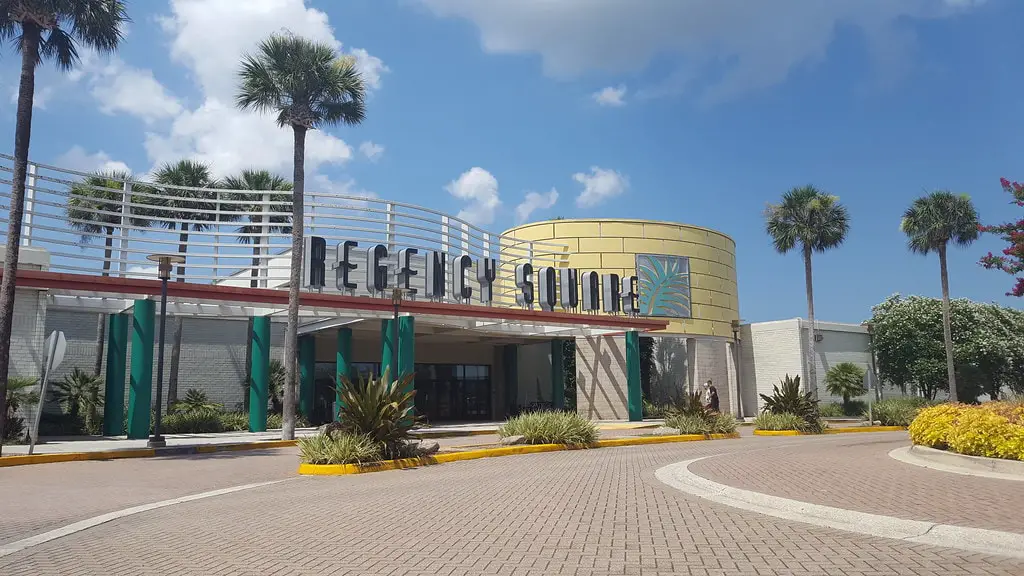
The 1980s ushered in a new phase of growth and transformation for the mall. A major expansion in 1981, costing $30 million, nearly doubled the mall’s size and reshaped its landscape.
This expansion introduced new major retailers, including Sears and a relocated Ivey’s, enhancing the mall’s retail offerings and attracting a wider customer base.
The former Ivey’s location was transformed into Furchgott’s, and the existing May-Cohens store was expanded.
Moreover, a food court and a six-screen AMC theater were added along the east wing, turning the mall into a comprehensive destination for shopping, dining, and entertainment.
The expansion required the removal of the southwest outparcel, leading to the relocation of Annie Tiques to the Jacksonville Landing when it opened in 1987.
These developments increased the mall’s retail footprint and enhanced its role as a central hub for community life and leisure activities.
The Golden Era of the 1970s and 1980s was a time of prosperity, community engagement, and significant growth for Regency Square Mall.
Challenges and Changes in the 1990s
The 1990s were a transformative decade for Regency Square Mall, marked by significant changes and challenges that reshaped its commercial landscape.
The Regency Twin Theater’s closure on the property’s northeast corner signified the end of an era and the beginning of new developments.
Piccadilly’s Cafeteria constructed a new structure in its place, moving out of the mall’s interior and marking a shift in its dining offerings.
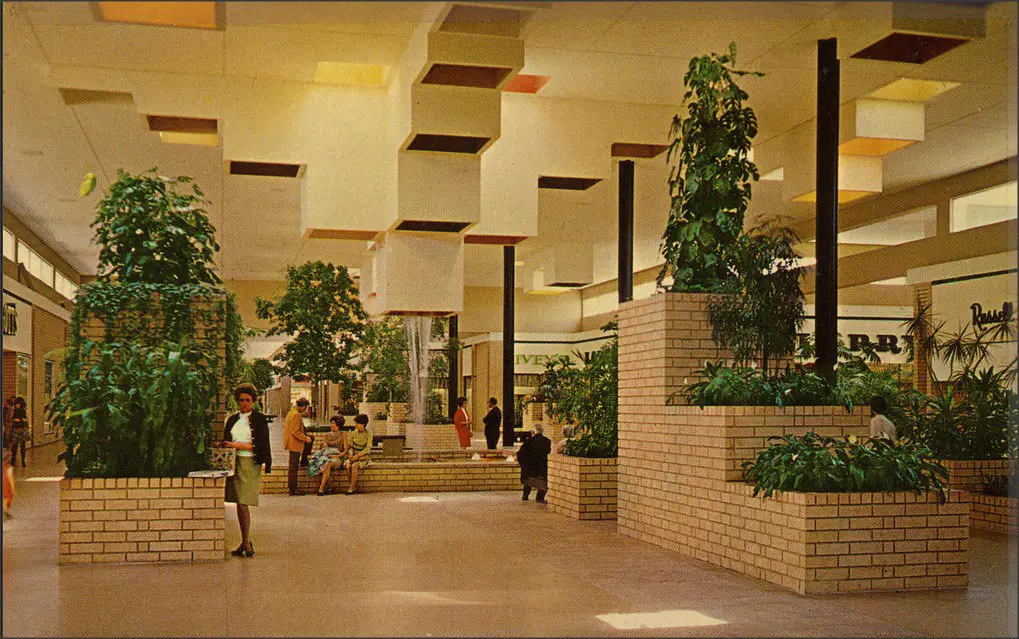
This decade also witnessed a pivotal change in ownership. In 1991, the Regency Group sold the property to General Growth Properties for $71.8 million, a transaction introducing new management perspectives and strategies to revitalize the mall’s appeal and profitability.
This change set the stage for renovations and additions attempting to adapt to the evolving retail environment.
One of the most significant developments of the 1990s was the entry of new stores and the expansion of existing ones.
After rebranding the former Ivey’s store in June 1990, Dillard’s constructed a new location in the West Wing, which opened in 1992, along with 28,000 square feet of new inline store space.
This expansion was part of a broader strategy to modernize the mall and enhance its retail offerings.
The closure of the mall’s Woolworth store in July 1997 marked the end of an era, leaving room for new ventures and retail concepts to take its place.
In addition to retail changes, the mall underwent significant renovations to improve the shopping experience and attract more visitors.
In 1998, a transformative development occurred when a state-of-the-art, 24-screen AMC movie complex was introduced at the northwest corner of the mall, replacing the former six-screen theater.
This state-of-the-art cinema complex became a major attraction, drawing moviegoers and enhancing the mall’s status as an entertainment hub.
Furthermore, a substation of the Jacksonville Sheriff’s Office was added, improving security and addressing safety concerns.
The 1990s were a decade of challenges and opportunities for Regency Square Mall. The closure of iconic stores and the introduction of new retail players marked a transition period.
Through strategic renovations, the addition of modern facilities, and a focus on security, the mall sought to reinvent itself and maintain its relevance in Jacksonville’s competitive retail landscape.
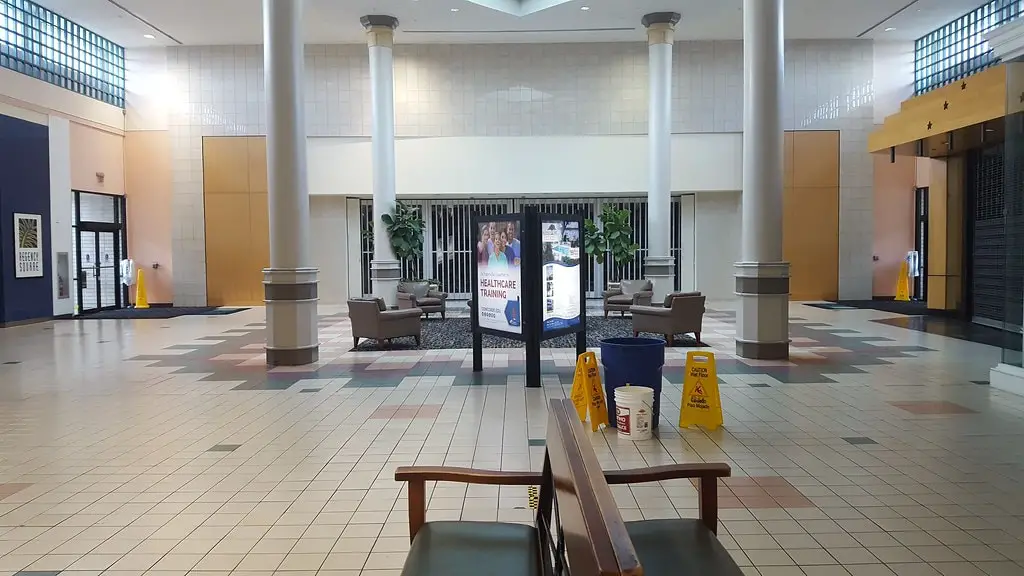
The 2000s: A Decade of Decline
The turn of the millennium brought challenges that marked the beginning of Regency Square Mall’s downward trajectory.
The early 2000s were characterized by significant retail shifts and an increasing concern over safety and security, which collectively contributed to the mall’s decline.
One of the most notable events was Montgomery Ward’s closure in 2001. This departure left a substantial vacancy and signaled a broader trend of changing retail dynamics.
Once bustling with shoppers, the space became a symbol of the mall’s challenges. Although retailers like Burdines and Kohl’s expressed interest in occupying the vacated space, the mall struggled to maintain its former vibrancy and appeal.
Crime emerged as a pressing issue during this period, casting a shadow over the mall’s reputation. The area’s crime-ridden perception deterred shoppers and contributed to a sense of decline.
In response to these concerns, mall management implemented measures to improve safety and restore public confidence.
Among these initiatives was the introduction of a formal conduct and dress code in 1999, designed to address offensive or intimidating behavior and curb gang activity.
Leveraging its status as private property, the mall’s management rigorously implemented these regulations, underscoring their dedication to fostering a secure and inviting atmosphere for every guest.
Despite these efforts, the challenges of the early 2000s left an indelible mark on Regency Square Mall. The closure of key stores, the struggle to fill vacant spaces, and the pressing issue of crime collectively contributed to a period of decline.
As the decade progressed, the mall faced the task of navigating these difficulties and finding new ways to adapt and reinvent itself in an ever-changing retail landscape.
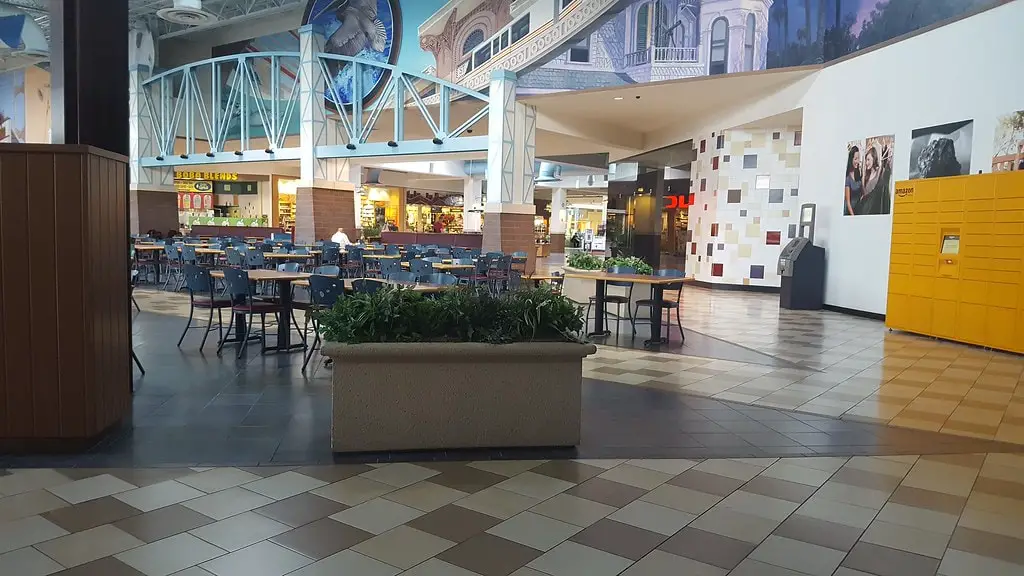
The 2010s: An Era of Closures and Lawsuits
The 2010s were a tumultuous period for Regency Square Mall, characterized by closures and legal challenges that underscored the mall’s operational and financial struggles.
This era marked a significant shift in the mall’s trajectory, with major anchor stores departing and legal disputes arising, further complicating the mall’s efforts to remain a relevant and thriving retail destination.
The decade witnessed the closure of key anchor stores, which had long been pillars of the mall’s retail offerings.
In 2015, Belk announced the closure of their Regency store, a decision that followed the completion of a new off-mall store.
This departure was a significant blow to the mall, as Belk had been a major draw for shoppers. The situation worsened in 2016 when Sears announced its store closure at Regency Square Mall as part of a broader plan to close 78 stores nationwide.
The back-to-back closures of Sears and Belk left a notable void, significantly reducing the mall’s anchor presence and impacting foot traffic and overall appeal.
Amidst these closures, the mall faced legal challenges, highlighting the property’s deteriorating condition and the tenants’ dissatisfaction.
In 2017, International Decor Outlet sued the mall owners Namdar and Mason, citing negligence in addressing maintenance issues such as a leaking roof, which led to water stains and mold growth.
This lawsuit and others from tenants alleging issues like broken air conditioning and pest infestations painted a grim picture of the mall’s operational struggles.
These legal battles imposed financial burdens and damaged the mall’s reputation, making attracting and retaining tenants increasingly difficult.
The 2010s were a defining period for Regency Square Mall, marked by the departure of key retailers and a series of legal disputes that underscored the property’s challenges.
The closures of Belk and Sears and the lawsuits over maintenance and operational issues reflected the mall’s struggle to adapt to the changing retail landscape and maintain its status as a vibrant shopping destination.
As the decade came to a close, Regency Square Mall’s future hung in the balance, with its ability to overcome these challenges and reinvent itself becoming more crucial than ever.
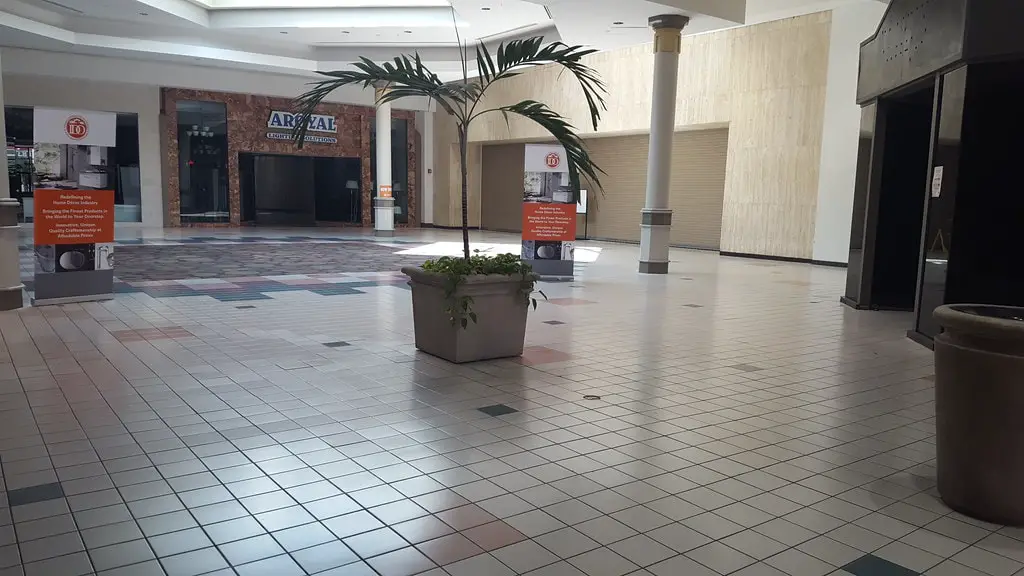
Regency Square Mall in the 2020s: A Reflection of Resilience and Change
During the COVID-19 pandemic, Regency Square Mall in Jacksonville, Florida, transitioned from a bustling retail center to a critical community health resource.
After nearly a year of service, the mall officially concluded its role as a coronavirus testing and vaccination site in June 2021.
Throughout this period, the mall facilitated over 400,000 COVID tests and administered over 166,000 vaccinations, pivotal in the city’s public health response.
Initially a federally supported test site, the mall expanded its services to include vaccinations, becoming Northeast Florida’s first site to offer vaccinations to residents aged 16 and 17.
Despite the challenges posed by the pandemic, Regency Square Mall demonstrated adaptability and community commitment, serving as a beacon of support in Jacksonville’s fight against COVID-19.
As 2023 unfolded, Regency Square Mall in Jacksonville, once a bustling center of commerce and social life, continued to navigate through a period of transformation and reflection.
In October 2023, a glimmer of hope emerged as Lake City-based Blackwater Development expressed interest in purchasing the shopping center.
Blackwater emphasized the early stages of due diligence and the company’s commitment to assessing the property thoroughly to determine the project’s feasibility.
The anticipated closure of the sale, expected in the third quarter of 2024, marks a significant chapter in the mall’s history. Notably, the deal does not include properties like the former Sears, the Dillard’s Clearance Center, and Impact Church, which have separate ownership.
Once a bustling hub and the area’s first large regional mall, the mall faced challenges as demographic shifts and the departure of key retailers led to its decline.
As Blackwater Development navigates this complex acquisition, the future of Regency Square Mall hangs in the balance, with hopes of revitalization and renewed vibrancy.

A few things that weren’t mentioned in the article.
1) The tolls on the bridges of Jacksonville were removed in 1988. After wich is when crime started rising.
2) In 1987 the Jacksonville Landing opened in downtown on the riverfront.
3) When the Avenues Mall opened in 1990, it became the new place to shop.
4) in 2005 the St. Johns Town center opened, this became the final straw for regency.
Your comment adds much-needed perspective to the story of Regency Square Mall. Thanks for enriching the conversation with these historical points.
Also, the Beach residents believe that Butler Blvd., Beach Blvd., & Atlantic Blvd. should ALL be Till Roads. When we have visitors from other places, it sometimes feels like they don’t hold our Beaches as dear as the Beach Residents do. They leave LOTS MORE Than their footprints once they leave, & it’s up to US to clean up after them. Trash, dirty diapers, cigarettes butts, half eaten food & etc. If the roads were TOLL roads, the money could go to keeping our beaches clean!
Thanks for voicing your concerns! It’s always refreshing to hear from people who care about our environment.
The WORST that happened to the Beaches is when the toll was removed. Butler Blvd., Beach Blvd., & Atlantic Blvd. should ALL be till roads! We live in Jax Beach, & people who join us & all we have to offer often times trash the beach & surrounding areas. It’s a mess when they leave, & WE have to clean up after them. If the ways in we’re toll roads only, the money could certainly help to keep our beaches clean.
Thank you for your comment! It’s enlightening to hear this perspective about the tolls and beach cleanliness. It indeed prompts further thought.
I am in the process of moving into Arlington and ride the bus for free as a senior citizen. They all stop at the mall hub. I took a walk around the mall. Is it about 1/2-mile circumference?
Schedule a week for scavengers to ta take what they want, bring in the wrecking balls and bulldozers, dig a big deep hole in a remote corner of the lot, and push it all in the hole.
Welcome to Arlington! I believe the mall’s circumference might be close to half a mile—what a nice way to explore.